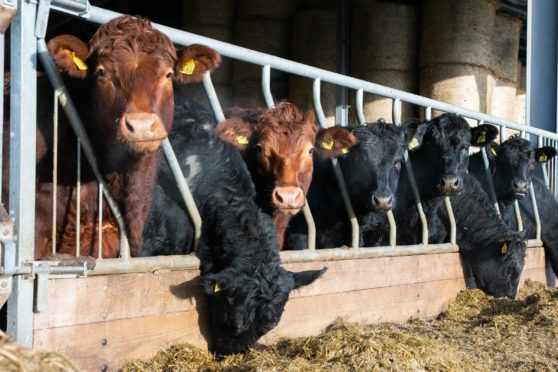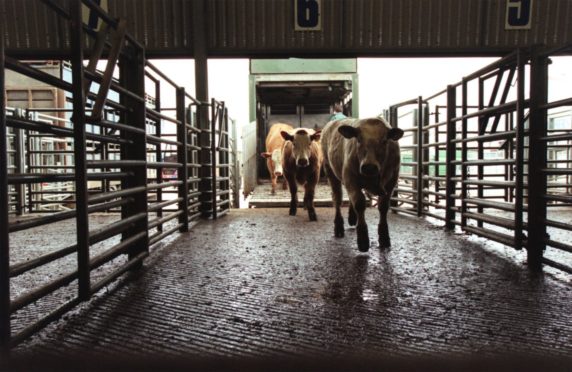Beef farmers are enjoying continued strong trade for their cattle with “significant” price increases reported in recent weeks.
The Agriculture and Horticulture Development Board (AHDB) said the GB all-prime average cattle price increased to 399.3p per kg in the week to April 10 – up by more than 70p per kg on the same week in 2020.
“The cumulative increases in recent weeks have been significant and highlight the strength of the cattle trade at present,” said AHDB senior red meat analyst, Bethan Wilkins.
“Keen retail demand continues to be a feature of the market, and still seems to be keeping ahead of supplies coming forward. Estimated prime slaughter during the week totalled 30,100 head, 2% lower than the week before and 4% lower than the same week last year.”
She said the average overall price for steers across Great Britain was up 3.1p to 400.2p per kg, with R4L steers up 1.9p to 408.8p per kg.
The average overall heifer price was up 3.1p to 399p per kg, with R4L heifers up 1.8p to 408.6p per kg, while the average overall price for young bulls increased by 7.7p to 392.6p per kg.
“It remains to be seen how the ongoing easing of lockdown influences British cattle prices in the coming weeks,” added Ms Wilkins.
“Strong retail demand is particularly positive for British beef demand, but as the food service market reopens, we might reasonably expect more competition from imported beef through these outlets.”
The latest figures from red meat levy body Quality Meat Scotland (QMS) show price increases for all classes of prime cattle in the past week.
The average deadweight price for steers is up 2p to 414.5p per kg, while the average deadweight price for heifers is up 3.2p to 417p per kg. Young bulls also experienced a 10.7p increase to an average deadweight price of 409.2p per kg.
All Scottish deadweight prices remain ahead of those in England and Wales with average prices of 394.8p, 392.9p and 386.3p per kg respectively for steers, heifers and young bulls.
Meanwhile, AHDB figures show the average GB liveweight price for old season lambs increased by 4.7p to 312.2p per kg in the week to April 14.
AHDB livestock analyst, Hannah Clarke, said: “This puts the price 96p above the price achieved in the same week last year, and over £1 above the five-year average for the week.”
She said the average GB liveweight price for new season lambs had decreased by 14.8p to 346p per kg, however it was still 82p per kg more than the same week in 2020.
Ms Clarke added: “Reports suggest that trade for spring lambs has eased somewhat following Easter.
“The Muslim holy month of Ramadan began on Tuesday, likely offering support to domestic sales and those for export. However, if typical gatherings and celebrations are not allowed to happen under Covid-19 restrictions, then it is plausible that lamb demand could be weaker than usual.”

